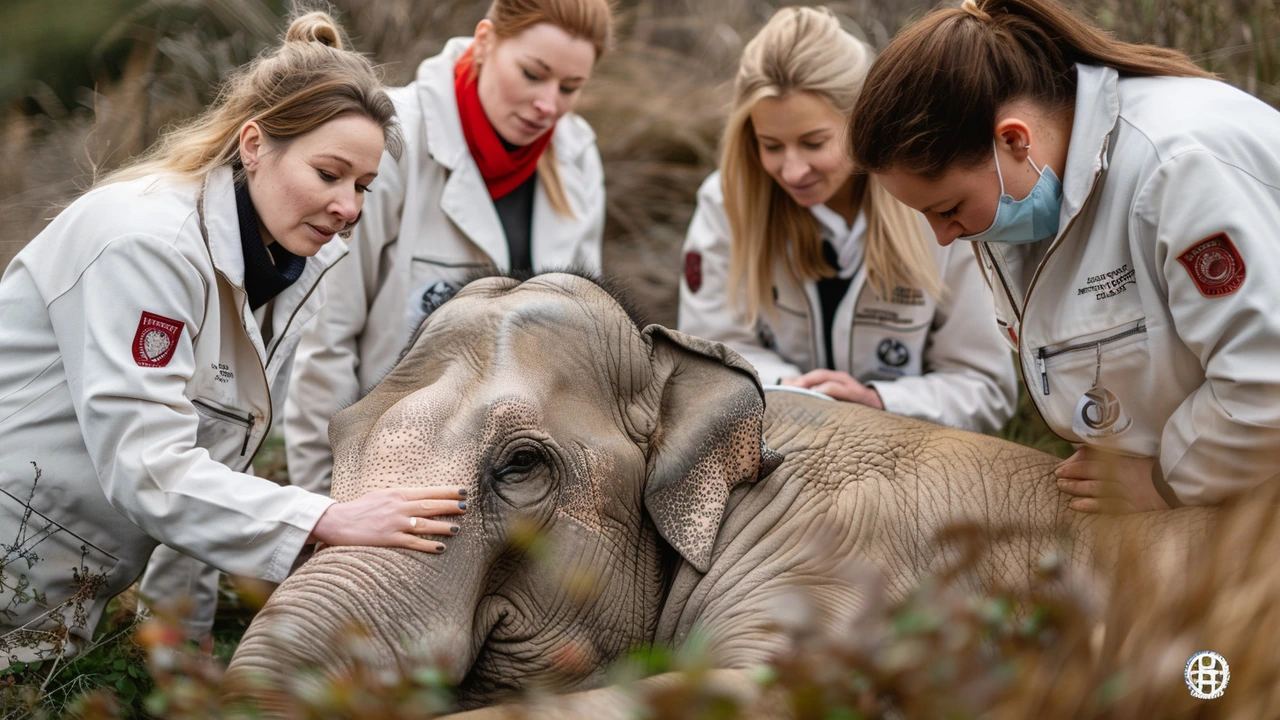
Introduction to Elephant Massage
Imagine a gentle giant, towering and majestic, closing its eyes in relaxation as trained hands work through its thick skin, easing muscles and bringing a sense of calm. This is no fantasy; it's the pioneering world of elephant massage, a practice that is transforming the approach to animal health and wellness, especially for those in captivity or rehabilitation. Born out of a deeper understanding of animal welfare and the unique needs of elephants, this innovative trend is not just about relaxation. It's about enhancing the overall well-being of these magnificent creatures, ensuring their physical and mental health is prioritized.
The practice might seem unconventional at first glance, but it's grounded in a rich history of animal care that spans cultures and ages. Similar to how human massage has evolved to become a crucial part of overall wellness, elephant massage is stepping into the limelight, offering a tailored approach to addressing the specific health needs of elephants. From improving circulation and reducing stress to enhancing joint mobility and promoting healing, the benefits are profound and far-reaching.
The Origins and Evolution of Elephant Massage
The concept of animal massage is not new; it has been practiced in various forms across different cultures for centuries. However, the specialization of elephant massage is a relatively recent development, finding its roots in regions where elephants have been closely integrated into the community and daily life. Countries like Thailand and India, with their long-standing traditions of working with elephants, have pioneered these methods, blending ancient practices with modern veterinary science to offer a holistic approach to elephant care.
Elephant massage initially emerged as a part of traditional care routines, especially in places where these animals were used for labor or as part of ceremonial activities. It was a way to ensure their strength, health, and well-being were maintained, considering the physical demands placed on them. Over time, as the global perspective on animal welfare and rights evolved, so did the practices surrounding elephant care. What began as basic rubbing and patting to soothe tired muscles has transformed into a sophisticated therapeutic method, supported by veterinary research and aimed at offering tangible health benefits.
Benefits of Massage for Elephants
The benefits of massage therapy for humans are well-documented, ranging from reduced stress and improved circulation to enhanced muscle recovery and flexibility. Elephants, despite their massive size and thick skin, experience similar benefits, which is transformative for their overall health. The most notable advantages include:
- Improved circulation, aiding in the efficient delivery of oxygen and nutrients throughout the body.
- Reduced stress and anxiety, promoting a sense of calm and wellbeing that is essential for their mental health.
- Enhanced joint mobility and flexibility, crucial for preventing injuries and ensuring their physical well-being.
- Support in healing from injuries, with massage techniques aiding in reducing inflammation and promoting recovery.
In addition to these, massage can play a vital role in building trust and strengthening the bond between elephants and their caretakers, an aspect that is invaluable in rehabilitation settings. It's a practice that touches on the physical, emotional, and social facets of elephant health, marking a significant shift in how their care is approached.
Elephant Massage Techniques and Practices
The techniques used in elephant massage draw from a variety of traditions, combining elements from human massage therapy, traditional animal care practices, and modern veterinary science. Given the size and unique physiology of elephants, the methods are adapted to ensure they are effective and safe. Trained professionals use a combination of hands-on massage, stretching exercises, and sometimes tools like soft massage balls to gently work on the muscles, joints, and skin.
One of the key aspects of performing massage on elephants is understanding their body language and responses. It's a deeply communicative process, where the masseuse must be attuned to the signals the elephant gives, adjusting techniques and pressure accordingly. This responsive approach ensures that the massage is not only effective but also a positive experience for the elephant, fostering trust and relaxation.
The Role of Trained Professionals in Elephant Massage
Given the specialized nature of elephant massage, the role of trained professionals cannot be overstated. These individuals undergo specific training that equips them with the knowledge and skills necessary to safely and effectively perform massage on elephants. Their education covers a broad spectrum, from understanding elephant anatomy and physiology to mastering the techniques of massage and recognizing the signs of discomfort or distress in the animals.
These professionals serve as a bridge between traditional practices and modern veterinary care, ensuring that the massages contribute positively to the elephants' health. Their involvement is crucial in setting standards for the practice, promoting animal welfare, and educating others about the importance of this innovative approach to elephant care.
Write a comment